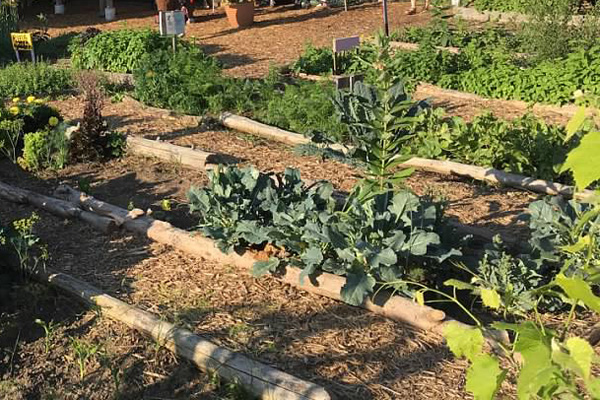The 6-Second Trick For City Blooming
The 6-Second Trick For City Blooming
Blog Article
How City Blooming can Save You Time, Stress, and Money.
Table of ContentsUnknown Facts About City BloomingMore About City Blooming6 Easy Facts About City Blooming ExplainedAll about City BloomingIndicators on City Blooming You Should Know
Intrigued in expanding food for sale in the City of Chicago? Below is a listing of often asked questions pertaining to the policies and laws that farmers need to think about when intending a city farming project.
The zoning modification does not modify any various other codes handling composting, building permits, purchasing or leasing City owned property, business licenses or environmental contamination. There are existing codes that manage these issues and they continue to be in complete impact and might be appropriate to your project. Neighborhood gardens are usually owned or handled by public entities, public companies or community-based companies and preserved by volunteers.
Urban ranches grow food that is meant to be sold, either on a not-for-profit or for-profit basis. Because of their commercial objective, urban ranches need a business permit. Yes. An area yard is enabled to sell surplus create that was grown on site if the sales are accessory or subordinate to the garden's primary purpose explained above.
Our City Blooming Ideas
Composting is enabled yet just for plant product that is generated and utilized on website. The amount of compost material can not exceed 25 cubic lawns at any provided time according to the criteria in 7-28-715 of the City's Municipal Code. Yes. Since the dirt at many new yard websites requires amending, garden compost, dirt, timber chips, or various other materials can be obtained to build or improve the expanding room - landscaping.

If a structure permit is required then the hoophouse will be taken into consideration an accessory building. You can discover even more regarding the building authorization requirements by calling the Division of Buildings. The 25,000-square-foot size limit is planned to stop a single community garden from dominating a given block or interfering with the block's existing property or commercial character.
The restriction does not apply to yards found in Public Open Area (POS) areas. Can there be more than one area garden that is 25,000 square feet on a solitary block? Fencing is not called for, nevertheless, yards that have large parking locations might be needed to set up secure fencing or other landscaping functions.
The Basic Principles Of City Blooming
B1 & B2 areas require that all business usage activities be performed inside. R areas limit commercial activity. The guidelines show the objective and intent of the Zoning Code. Is secure fencing needed for urban farms? Yes. Fences might be called for, together with landscape design and screening, for sure parking lot and exterior job or storage areas depending upon location and the specific activity happening.
Yes. Urban farms call for building licenses and zoning authorizations prior to building and construction. Various other kinds of city review might be called for depending on certain structures, activities, dimension, landscaping, licensing, public health and stormwater administration concerns. Many of these requirements are recognized in the job layout or permitting process, nevertheless, the candidate may be responsible to separately determine specific licenses or permits that might be needed.
Yes. The type eco-friendly practices of license is established by what is taking place at the website. The Department of Business Affairs and Customer Security can assist determine the specific kind of organization license that's called for. Yes. Off street car park is needed for most commercial projects in Chicago. The called for variety of garage is based upon the variety of workers functioning on website and not the square video of the expanding area.
The Best Strategy To Use For City Blooming

Yes. An urban farm can offer compost product created on website, nevertheless, the operation must adhere to the laws in 7-28-715 of the Chicago Municipal Code. Yes. Aquaponic systems are allowed inside on urban ranches in numerous zoning districts. A zoning testimonial and structure permit is needed in order to install structures or systems and a company license is needed as defined over.
Up to 5 hives or colonies of honey bees might be maintained as an accessory usage. Beekeepers must register with the Illinois Division of Farming. For even more info regarding the suggested zoning change you may contact the Department of Real Estate and Economic Development, Bureau of Planning and Zoning at 312.744.8563.
, which takes location in rural locations at the edge of suburbs.
What Does City Blooming Do?
It can entail an activity of natural cultivators, "foodies" and "locavores", that seek to create social networks based on a shared ethos of nature and neighborhood holism. These networks can develop by way of official institutional support, ending up being integrated into neighborhood community planning as a "change community" movement for lasting metropolitan development.
In either situation, the much more straight accessibility to fresh vegetable, fruit, and meat products that may be understood through city agriculture can enhance food security and food security while lowering food miles, leading to reduced greenhouse gas exhausts, therefore contributing to environment modification mitigation. Several of the initial proof of city farming originates from Mesopotamia.
Report this page